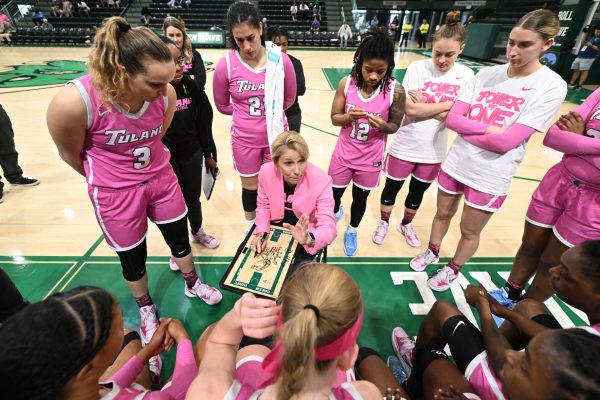Tulane must re-evaluate course evaluation system
December 5, 2014
The following is an opinion article, and opinion articles do not reflect the views of The Tulane Hullabaloo.
Tulane’s system of course evaluations contains many flaws. Students have no incentive to fill out the evaluations and are not given adequate access to previous years’ course evaluations. The administration must address these problems to create a better system of academic assessment at Tulane.
According to Katie Busby, assistant provost for assessment and institutional research, the average completion rate of course evaluations is around 53 percent. The main reason behind this low number is lack of motivation.
Currently, Tulane encourages students to fill out course evaluations through advertising and a large number of emails. While these measures are necessary, there is no consequence to not filling out course evaluations. Many students do not have the incentive to complete the forms before their hectic finals week begins, despite the fact that each evaluation takes only a few minutes.
In the long run, a lack of feedback hurts students themselves because they are unable to get accurate information about courses they want to take. It also has a negative impact on the academic environment at Tulane.
Not only does the lack of feedback make it harder for professors to plan their lessons, but it also creates less accountability in the system, allowing unqualified teachers to escape examination.
In the Tulane Engineering Department, around one percent of students’ grade comes from completing course evaluations. Though grades should not be impacted by administrative issues, this incentive is effective.
The measures taken by peer institutions can serve as models to learn from. At Stanford University, for example, grades are not available to students until they complete all their evaluations. At Emory University’s Rollins School of Public Health, students can only see evaluations if the course feedback rate reaches 66 percent.
No matter what method the school adopts, there needs to be a system that encourages students to complete evaluations.
The low participation rate also results from the lack of student access to previous years’ evaluations. Students can log in through Gibson to the SmartEvals website to view evaluations. The system itself, however, is not complete and is hard to navigate.
For example, when searching “writing,” viewers will see an overwhelming number of “N/A” results on the screen, with only “overall course” and “overall instructor” available, not even for every instructor.
Course evaluations are necessary to the college experience because they provide both students and the university with necessary information. Tulane must improve the system to change the low completion rate and inadequate student access.
Rosie Li is a sophomore in the Newcomb-Tulane College. She can be reached at [email protected].





















Leave a Comment